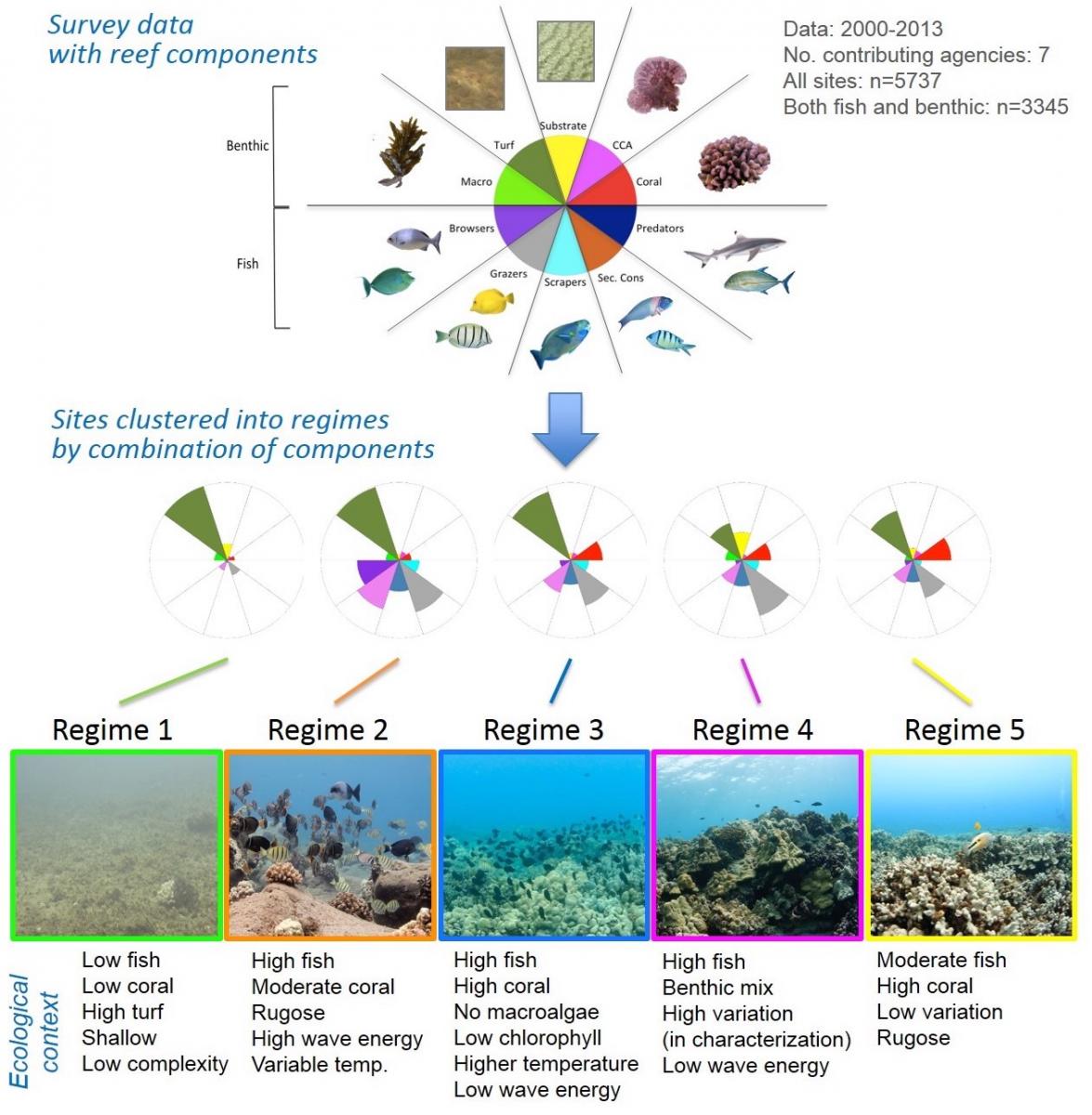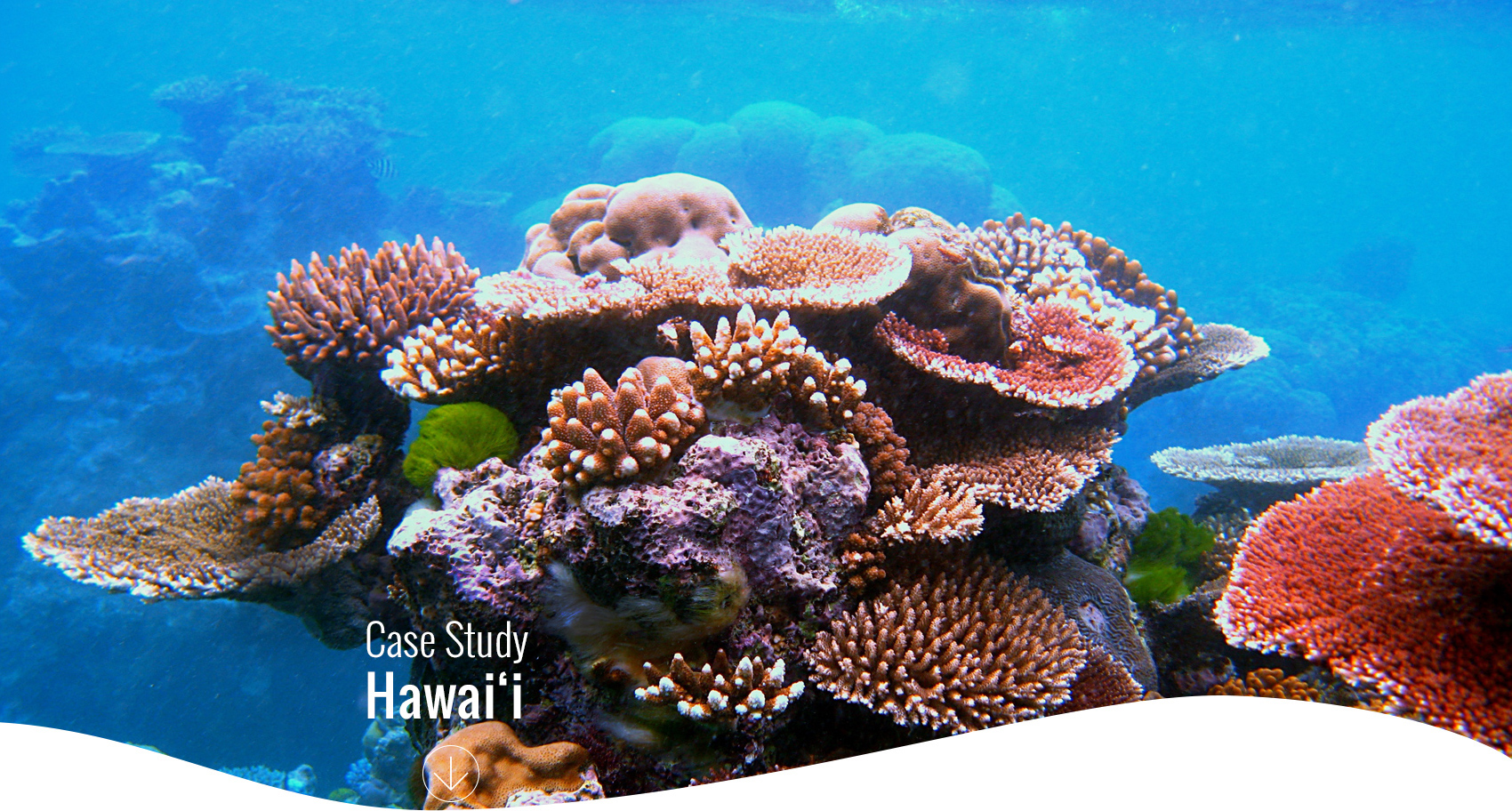Characterizing reef regimes
To better understand the diversity of reef types and potential reef changes in Hawaii, we used both benthic and fish data to define reef regimes5. Previous efforts have relied solely on benthic cover (i.e. coral versus algae) to define reef state. Our more holistic, ecosystem based approach to identifying reef regimes is novel for treating the fish community as a component of the ecosystem instead of a driver of the ecosystem. Our analysis provides a more nuanced understanding of reef regimes, revealing five distinct reef types, in contrast to the traditional perception of only two dominant states:

Mapping these regimes enhances our understanding of the distribution and variation of reefs across Hawai‘i. Complementary time series data allowed us to look at transitions among reef regimes explicitly for 65 sites. This analysis showed that while all possible regime transitions are possible, some are more likely (e.g., 4->1, 4->5) and some regimes appear more stable through time, (e.g., regimes 1 and 5). The variety of transitions observed suggests that reef change is a more subtle and variable process than implied by the simple view that under stress reefs degrade from “healthy,” coral-dominated to “unhealthy,” algal-dominated. Exploring the distinctions that separate regimes, and patterns of transitions among them, helps establish a baseline for measuring reef change and prioritizing protection for reefs prone to tipping points.
